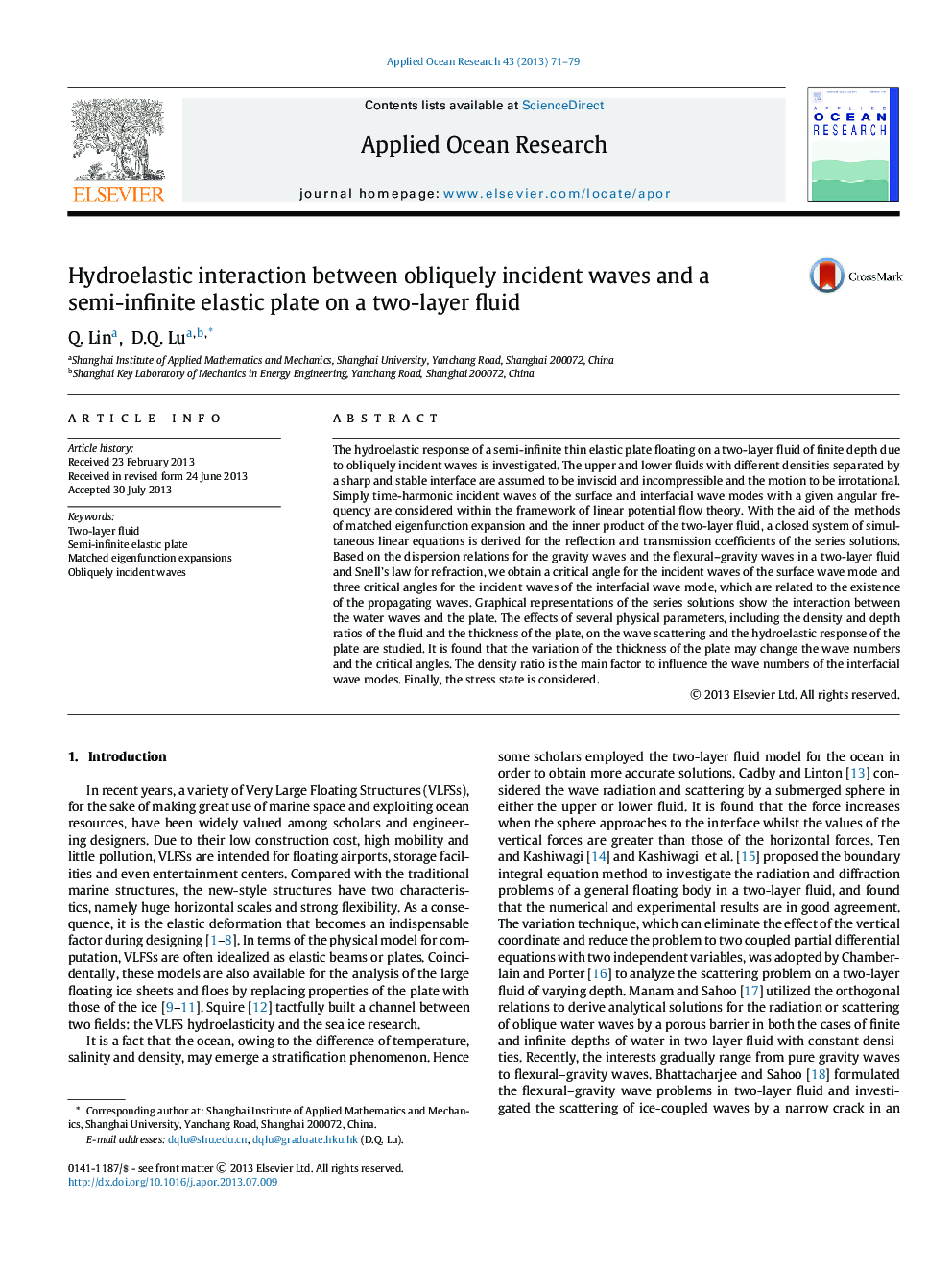| Article ID | Journal | Published Year | Pages | File Type |
|---|---|---|---|---|
| 1720111 | Applied Ocean Research | 2013 | 9 Pages |
•The hydroelastic response of a semi-infinite thin elastic plate floating on a two-layer fluid of finite depth due to obliquely incident waves is investigated.•we obtain a critical angle for the incident waves of the surface wave mode and three critical angles for the incident waves of the interfacial wave mode.•It is found that the variation of the thickness of the plate may change the wave numbers and the critical angles.•The density ratio is the main factor to influence the wave numbers of the interfacial wave modes.
The hydroelastic response of a semi-infinite thin elastic plate floating on a two-layer fluid of finite depth due to obliquely incident waves is investigated. The upper and lower fluids with different densities separated by a sharp and stable interface are assumed to be inviscid and incompressible and the motion to be irrotational. Simply time-harmonic incident waves of the surface and interfacial wave modes with a given angular frequency are considered within the framework of linear potential flow theory. With the aid of the methods of matched eigenfunction expansion and the inner product of the two-layer fluid, a closed system of simultaneous linear equations is derived for the reflection and transmission coefficients of the series solutions. Based on the dispersion relations for the gravity waves and the flexural–gravity waves in a two-layer fluid and Snell’s law for refraction, we obtain a critical angle for the incident waves of the surface wave mode and three critical angles for the incident waves of the interfacial wave mode, which are related to the existence of the propagating waves. Graphical representations of the series solutions show the interaction between the water waves and the plate. The effects of several physical parameters, including the density and depth ratios of the fluid and the thickness of the plate, on the wave scattering and the hydroelastic response of the plate are studied. It is found that the variation of the thickness of the plate may change the wave numbers and the critical angles. The density ratio is the main factor to influence the wave numbers of the interfacial wave modes. Finally, the stress state is considered.
